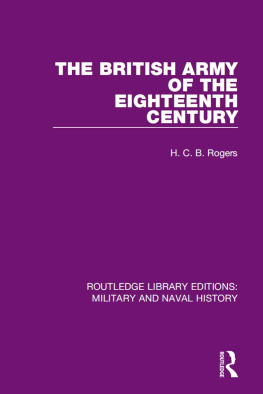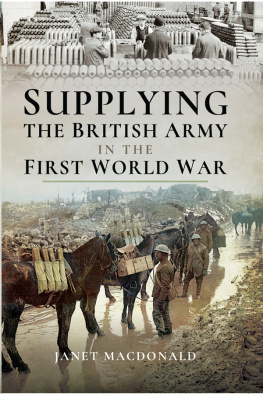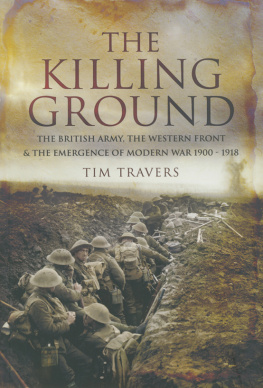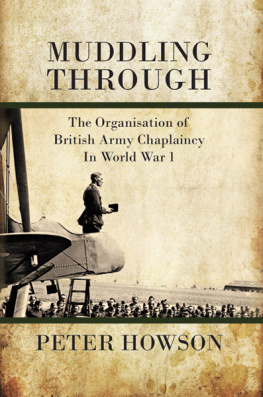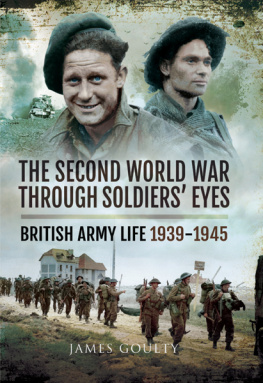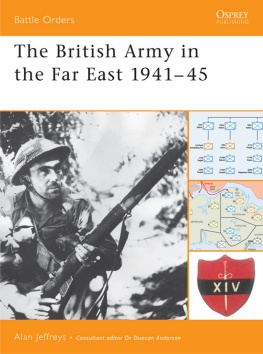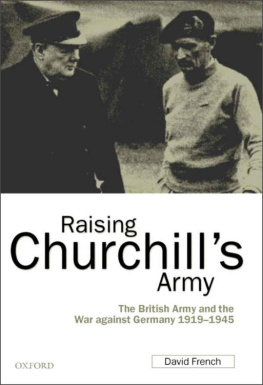ROUTLEDGE LIBRARY EDITIONS: MILITARY AND NAVAL HISTORY
Volume 21
THE BRITISH ARMY OF THE EIGHTEENTH CENTURY
THE BRITISH ARMY OF THE EIGHTEENTH CENTURY
H. C. B. ROGERS
First published in 1977
This edition first published in 2016
by Routledge
2 Park Square, Milton Park, Abingdon, Oxon OX14 4RN
and by Routledge
711 Third Avenue, New York, NY 10017
Routledge is an imprint of the Taylor & Francis Group, an informa business
1977 George Allen & Unwin (Publishers) Ltd
All rights reserved. No part of this book may be reprinted or reproduced or utilised in any form or by any electronic, mechanical, or other means, now known or hereafter invented, including photocopying and recording, or in any information storage or retrieval system, without permission in writing from the publishers.
Trademark notice: Product or corporate names may be trademarks or registered trademarks, and are used only for identification and explanation without intent to infringe.
British Library Cataloguing in Publication Data
A catalogue record for this book is available from the British Library
ISBN: 978-1-138-90784-3 (Set)
ISBN: 978-1-315-67905-1 (Set) (ebk)
ISBN: 978-1-138-92668-4 (Volume 21) (hbk)
ISBN: 978-1-315-68307-2 (Volume 21) (ebk)
Publishers Note
The publisher has gone to great lengths to ensure the quality of this reprint but points out that some imperfections in the original copies may be apparent.
Disclaimer
The publisher has made every effort to trace copyright holders and would welcome correspondence from those they have been unable to trace.
THE BRITISH ARMY OF THE EIGHTEENTH CENTURY
Colonel H. C. B. Rogers
O.B.E.
First published in 1977
This book is copyright under the Berne Convention. All rights are reserved. Apart from any fair dealing for the purpose of private study, research, criticism or review, as permitted under the Copyright Act, 1956, no part of this publication may be reproduced, stored in a retrieval system, or transmitted, in any form or by any means, electronic, electrical, chemical, mechanical, optical, photocopying, recording or otherwise, without the prior permission of the copyright owner. Enquiries should be addressed to the publishers.
George Allen & Unwin (Publishers) Ltd 1977
ISBN 0 04 355011 8
Printed in Great Britain
in 11 point Baskerville type
by Cox & Wyman Ltd,
London, Fakenham and Reading
TO MY WIFE who sees in the British soldier the salt of the earth
Acknowledgements
In the research undertaken for this book, I owe much to the Society for Army Historical Research and to the London Library, to both of which I am privileged to belong. I am grateful to Messrs John Murray (Publishers) Ltd for their kind permission to quote from the translation by Mr W. C. Horsley of The Chronicles of an Old Campaigner. I am indebted to my friend Lieutenant-General Sir Reginald Savory, K.C.I.E., C.B., D.S.O., M.C. for the quotation, translated by him, which appears at the end of . Mr Philip Unwin and Mr John Bright-Holmes of my publishers have contributed a great deal to the final version of the book by their kindly comments and suggestions.
Contents
Illustrations
PLATES
MAPS
Many of those who have studied the military and political history of the eighteenth century will have encountered criticisms of the officers and men who composed the British Army of the period. The former are often stated to have been ignorant of their job, and the latter represented as the dregs of the nations manhood, who could only be held to their duty by a harsh and inhuman discipline. To me it seemed that if this assessment were correct, then the achievements of the British Army are incomprehensible. No army can be successful in war against well-trained and well-armed opponents, unless its regimental officers have a sound knowledge of their profession and its rank and file are animated by a high morale, together with confidence in themselves, their leaders, and their weapons. It was such considerations that inspired this book.
Indeed, having regard to its size, it is perhaps fair to claim that never in military history has any other army over a similar period surpassed it in fighting ability. Its many victories (Gibraltar, Blenheim, Ramillies, Oudenarde, Malplaquet, Dettingen, Minden, Emsdorff, Warburg, Wilhelmstahl, Belleisle, Louisbourg, Quebec, Guadeloupe, Martinique, Havannah, St Lucia and many others), emblazoned today on the colours of its regimental descendants read like a roll of drums, and in its few defeats (such as Amanza, Fontenoy and Lauffeld) the glory of its arms often outshone those of the victors. In comparison with the achievements of both enemies and allies, one cannot contemplate the campaigns waged in theatres ranging from India, through Europe and the Mediterranean littoral, to the Americas and the West Indies, without concluding that the British Army of the time was undoubtedly the finest in the world. If this is so, then officers and men must have been of a very high standard indeed, because the best of generals cannot defeat his adversary if his sword is blunt or brittle.
The Army which started its career of conquest under the Duke of Marlborough was a creation of some forty years earlier and had therefore little of tradition behind it. At its start it was a tiny force of only a few regiments. But for no less than fifty-three years of the eighteenth century the Army was fighting in some part of the world, and the succession of wars and the need to provide garrisons for overseas territories acquired as a result of them led to a series of increases in strength; even though Parliament, chronically nervous since the Commonwealth lest a strong standing army should seize power, always endeavoured to cut the Army to the bone after each threat to national security had apparently passed.
Throughout most of the eighteenth century it was the policy of the Government to contain the main military strength of the principal enemy, France, on the continent of Europe, by aiding allies with money and a limited number of troops, whilst pursuing the main aim of colonial conquest. It was an aim that required command of the seas by the Royal Navy and a first class Army to invade and consolidate. The pages that follow examine the nature of that Army and the strategy and tactics by which the Governments aims were pursued.
To show the strategy that was adopted in furtherance of Government policy, the campaigns of the Duke of Marlborough, Sir Jeffery Amherst, and Sir William Howe have been chosen; whilst the tactics by which strategy achieved its ends are the subject of the last three chapters, dealing, respectively, with Marlboroughs classic victory at Ramillies, the glorious failure at Fontenoy, and Cornwalliss twin successes at Camden and Guildford Court House.

